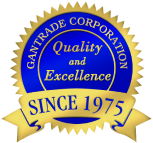
Since it has a low homopolymer glass transition temperature, processors use N-Butyl Acrylate (BA) in copolymers to improve low temperature properties, flexibility, softness, and toughness. BA exhibits superior photostability and is a preferred monomer for meeting requirements for weatherability and sunlight resistance.
BA is the acrylate ester used in the largest volumes in the production of all-acrylic, vinyl acrylic and styrene acrylic copolymers. Used as a “soft-monomer” to improve low temperature properties and toughness, BA offers price value and accounts for about 60 percent of the global acrylic ester monomer demand.
Major markets for BA include paint & coatings, such as architectural and automotive coatings, followed by the adhesives & sealants market. Other application areas include resins for inks, textile, paper & leather finishes, caulks.and plastics & elastomers.
Another significant and growing segment for BA is in thermoplastic ethylene acrylate copolymers, with BA levels up to 35 % in copolymers. Formulators use EBA copolymers as an impact modifier and processing aid in thermoplastics where it improves properties. End use applications include packaging, multilayer films, and adhesives.
All acrylates monomers will readily self-polymerize if not properly inhibited, stored, and handled. Polymerization can be rapid and violent, generating large amounts of heat and pressure. For storage and transportation, we supply BA with a polymerization inhibitor, usually MEHQ. In order for the inhibitor to function effectively, it’s important to store stabilized acrylate monomers under an air headspace and to replenish dissolved oxygen over time. In addition to being flammable, direct contact with acrylic monomers can cause irritation of the eyes, skin, nose, and throat, and these monomers are often considered to be skin sensitizers.
Use appropriate safety and personal protective equipment. We encourage our customers to have a comprehensive understanding of the EH&S information and safe product handling procedures when working with any acrylate monomers.
An intercompany committee prepared an excellent reference guide to essential information on the safe handling and storage of all inhibited acrylic monomers including 2-EHA. See the European Basic Acrylic Monomer Group (EBAM), Safe Handling and Storage of Acrylic Esters, publication.
If you’re looking to purchase high-purity butyl acrylate, Gantrade Corporation is one of the main global suppliers of BA and other specialty acrylic monomers for industrial use. Our packaging sizes can be 20 MT (44,080 lbs.) tank trucks, rail cars and drums. We maintain robust inventories in North America and Europe to meet global demand.
Gantrade’s Sales Specifications for N-butyl acrylate are shown below:
| Specifications | Methods | |
| Appearance | Clear, Colorless Liquid | Visual |
| Color (APHA) | 10 Maximum | ASTM D1209 |
| Purity | 99.5% Minimum | GC |
| Specific Gravity, 20°/20°C | 0.8936-0.9036 | ASTM D4052 |
| Water Content, Wt. % | 0.05% Maximum | ASTM D1364 |
| Acidity (expressed as acrylic acid) Wt. % | 0.01% Maximum | ASTM D1613 |
For more information on how BA can work for you, contact Gantrade today. Our team can offer the right technical advice for virtually any market application.

